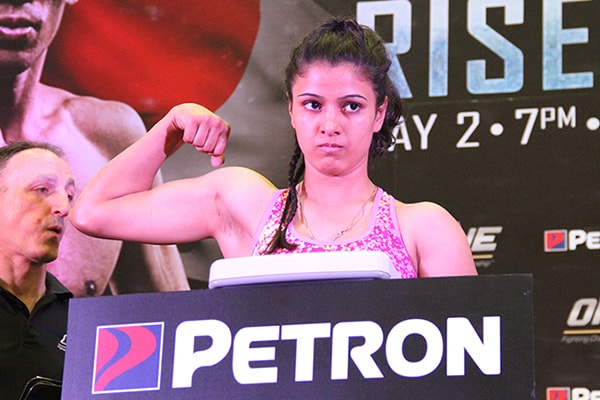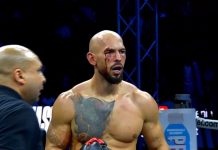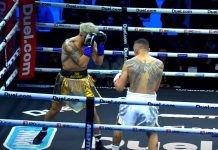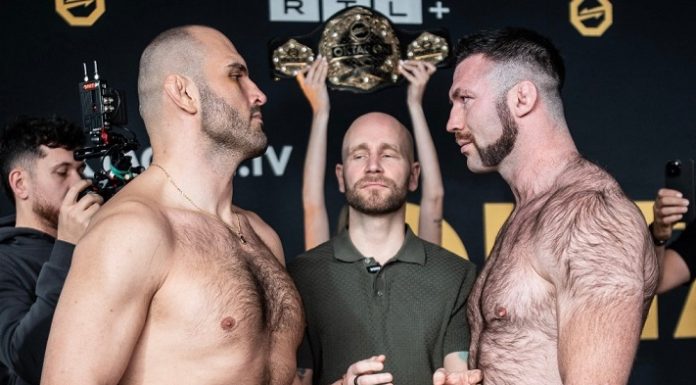
We’ve reached the fourth part of our look into Indian MMA, where we discuss the Indian MMA community expanding beyond its country’s borders.
We ended the last part with the fall of SFL in the year 2013. After that, the MMA scene in India came to an abrupt halt. SFL decided to host events in the USA, leaving the Indian market hanging out to dry. From 2014 to 2016, they held a mere five events in India. Even in those five events, they didn’t allow certain fighters, like Manjit Kolekar, who had demanded their previously promised money to compete in their events. Recalling that time, Kolekar says, “It was a dark and sad time for many Indian MMA fighters. The entire MMA movement in India had come to a halt. SFL did host a few events but they never gave me a fight.”
Even the fighters who had good relations with the company were not allowed to fight in other promotions. Rajinder Singh Meena opened up about those times and said, “SFL wasn’t the only promotion in India which stopped pushing events. Many promotions lost stability and caved in. Once in a while, a random promotion would just pop-up, host an event and then vanish in thin air. To top it, these promotions didn’t even guarantee pay. Back in those days, even SFL hosted only a few events in India.” This entire market crash left the Indian MMA space active and dead at the very same time. The MMA scene was functioning and was active on paper because of some event or another constantly happening, but at the very same time, all these fighters were signed to exclusive contracts which confined them to a small sector. This resulted in Indian MMA fighters having no room for growth.
In an interview with TFG, Indian MMA fighter Bharat Kandare opened up about how he had to give up an opportunity to fight in the UFC. “In 2014, I got an offer from the UFC through Somesh—the owner of Superhuman Gym. We accepted that offer and also had our opponent finalized. He was the semi-finalist of TUF China, and the fight was to take place in Macau. But UFC told us that Daniel Isaac had threatened them with dire consequences if they signed me as I was under contract with SFL. In spite of giving multiple release requests, SFL did not release me, and Daniel didn’t let my career progress and wasted precious years of my life. But I will get there sooner or later.” All of this resulted in the crashing of the structure created by SFL. This fall also started a new chapter in Indian MMA history.
It was during this time that the Indian MMA community stepped outside its bubble and showed the world that Indian MMA was more than just a freak show.
Please keep in mind that many things were happening at the same time when SFL fell from power. The MMA community was divided into clusters and each group/individual had their own story. We cannot cover each one of them and hence will cover the ones who made a strong impact.
Evolution
Flashback: In the last part, one of the events was the walkout of Jitender Khare. During SFL’s 2012 run, Khare along with his Evolution team walked out of SFL. After that walkout, no one from Evolution competed in the Super Fight League.
During the 2014-16 market crash of Indian MMA, the most active MMA cluster from India was Evolution. Opening up about his decision, Khare said, “I had some ideological differences with SFL, and hence I decided to stay away from the organization.” Khare also made it clear that he did not keep track of what was going on in SFL since he left.
Khare created his own team. He created the entire structure of Evolution and crafted it his own way. So when SFL left the Indian market, Evolution became one of the major powerhouses of Indian MMA. By 2014, they were very active. “I don’t exactly know what was happening in SFL, but we as a team were very active. Since 2014, we have competed in WSOF, Brave, KHK amateur, Boreno FC, Ultimate Beatdown, Warrior FC and many other international promotions.”
Khare is known for diligently working on his team and cutting himself off from the rest. “I try and steer clear from politics. People try and try to drag me in but I have so far managed to stay away from it,” said Khare. “This sport is not governmentally authorized, and everyone involved is self-proclaimed. People just like calling themselves something to add importance to their name. This is the reason why I stay away from people.”
The most popular Evolution fighter was Chaitanya Gavali. Gavali was one of the first Indian MMA fighters to secure a win in international, documented pro MMA events. He started his career as a Judoka and proceeded to make his switch to Mixed Martial Arts in early 2012. An accomplished grappler, Gavali, in a span of three years, managed to compile a record of 5-1. In his six-fight career, Gavali competed in promotions like Ultimate Beatdown, Warrior FC, and Boreno FC.
It was after this that he got the big call to WSOF Global Championship 1: China. This made Gavali the first Indian MMA fighter to compete under WSOF banner. This was arguably the biggest stage at which an Indian had competed in the year 2015. Gavali lost via submission, but he did manage to create a way for many others.
Superhuman and UFC Fighter Development
Superhuman MMA is currently one of the most popular gyms in India. Home to the first ever Indian UFC fighter, Bharat Kandare the gym was set up in the year 2011 with the aim of promoting MMA as a mode of fitness. Superhuman soon took a dive into the world of pro-MMA as they started signing people up. They gained a major push in 2015 as they successfully managed to set up the fighter development program.
What was the fighter development program?
Somesh Kamra, co-owner of Superhuman, was in touch with UFC since 2012. The UFC was interested in breaking into the Indian market. They wanted to promote MMA in India, and for that, they needed an Indian fighter. That is when they connected with Kamra.
“UFC was interested in learning more about the MMA scene in India. It was around 2012 that we connected for the first time. Then after a lot of brainstorming, they came to the conclusion that Indian MMA fighters needed a fighter development program.” Kamra said “They asked me to pick a few MMA fighters from India. These selected fighters would be sent to the USA to train in the Jackson-Wink MMA gym, all costs paid by the UFC.”
This was by far the best offer any Indian MMA fighter could get. India didn’t have the coaching infrastructure or proper resources required to build UFC-level MMA fighters, so the idea of getting to train in a gym where some of the best MMA fighters of all time had trained was indeed very exciting. A total of three fighters were sent.
- Siddharth ChandanshiveSiddharth Chandanshive was the first person who was registered to go to the Jackson-Wink Gym under the UFC’s fighter development program. A former wrestler, Chandanshive started his MMA career in the year 2013 and in a very short span managed to own a record of 5-1. All five of his wins were finishes. He hasn’t competed in any MMA fight since returning from Jackson-Wink. In an interview with Pro MMA Now, he says, “Training at Jackson-Wink was one of the best experiences I have ever had since taking MMA as a career. The atmosphere, people, approach, training, everything was different. The coaches over there were very helpful and shared various techniques which helped us learn a lot. In India, we have all the equipment and the resources to train a fighter but we do not have the coaches which have the experience and skills which they had back there in Jackson-Wink. ‘Ek ache mali ho to bagicha zarur sundar lage ga’ … If the gardener is good the garden shall bloom. This is the situation of Jackson-Wink, they have super coaches and a very good environment, hence fighters over there deliver when they enter the cage to fight.”
- Sumeet KhadeHe has been the most successful product of the program. Khade started his martial arts career as a kickboxer and later made his switch to MMA in 2012. Since returning from the program, Khade has gone 3-1—all three wins coming via knockouts—and currently holds a record of 9-2. He is now set to compete in the Russian promotion ACB. In an interview with My MMA News, he said, “When I was nine, I started karate and after acquiring a black belt in that I started learning kickboxing. I saw Anderson Silva on television while fighting in the UFC. I was inspired by him and I started to learn groundwork and got involved in MMA.”
- Bharat KandareKandare was the brightest prospect to be selected to the program. Not only did he hold an amazing record of 5-1, he was also a former SFL bantamweight champion. Before going to the program, Kandare had managed to create waves in the Indian martial arts community because of his stunning win at Ganryujima. Since going through the program, Kandare has gone 0-2. Since then, he has also become the first ever Indian to compete in the UFC. In an interview with MMA India Show, he said, “I was a part of the UFC development program. I thought I did well there and earned the Brave contract. I went to Thailand for a month-long camp and tore a ligament a week before the fight. I didn’t want to back out and took the fight. It’s no excuse. It is a loss and a hurting one. I’m glad the UFC understood my potential and spoke to my team and they decided to give me a shot at Shanghai. It wasn’t pre-planned.”
The fighter development program generated a lot of interest from various sources. Commenting on the way the program went, Superhuman Gym co-owner, Somesh Kamra said, “The fighter development program was a UFC brainchild, and it truly helped the fighters in many ways. When we are thrown in there with the likes of Jon Jones, BJ Penn, Holly Holm etc, there is automatically a WOW and a feel-good factor. With that comes the confidence of performance and obviously the immense learning from masters like Greg Jackson and Mike Winkeljohn.”
Independent Fighters
During this time, many Indian MMA fighters created their independent identity in the international circuit of MMA. Many of them simply didn’t join any team or management. They acted alone and made a name for themselves in the world of MMA. Almost all of these fighters were former SFL fighters. Let’s take a look at the most popular independent fighters of this time:
- Rajinder Singh Meena
Meena was an accomplished Wushu fighter. He started his MMA career way back during FCC days and was always considered to be one of the better MMA fighters of India. During his run in SFL, he managed to go 5-1 and even captured the SFL lightweight championship. Meena was signed to ONE FC in the year 2015. He says, “I was approached by someone associated with ONE via social media. We connected, and he offered a ONE FC contract to me. I agreed. There was no manager involved.” Meena currently holds a record of 1-4 in the ONE FC and has an overall record of 9-7.
- Manjit Kolekar
Manjit Kolekar is far and wide regarded as one of the best Indian female fighters. Kolekar started her martial career as a boxer and later made a switch to MMA with the help of her coach. She went 9-0 in the Indian circuit before being called on board to the Invicta FC roster. In 2016, she became the first Indian to compete on UFC Fight Pass. She locked horns with Kaline Medeiros and lost the fight via decision. Since competing in Invicta FC, she has gone 2-0 and currently stands with a record of 11-1. Opening up about her Invicta FC experience, Kolekar said, “Many people boast that they are the ones who got me the contract, but the reality is that I worked hard and got the Invicta FC contract all by myself. When I denied all these claims, they accused me of taking steroids. This is what happens when you deal with such managers.”
- Irfan Khan
Khan is one of the most popular Indian MMA fighters. Trained by Alan Fenandes, Khan started his MMA career way back in 2012 under the SFL banner. He proceeded to rack up a record of 6-0 before being tested against foreign opponents. Khan proceeded to compete in promotions like Brave and Primal FC after his run with SFL. He also competed in the WMMAA World Championship in 2015. Today he stands with a record of 7-6, which includes wins over some of the well-known names in the world of MMA. Opening up about the condition of MMA in India, Khan, in an interview with The Ring Side View, said, “As of now, the support system and the infrastructure for aspiring fighters in India are not in a good place. There are organizations like SFL & AIMMAA that are trying to bring about some positive changes but we have to wait and watch and see how much support we can garner from the Government. They think it’s a bloodsport and are not very forthcoming with it.”
- Priyanka Jeet Toshi
Priyanka Jeet Toshi started her career as a kickboxer. She made her switch to MMA after being selected for the MMA show SFL Challengers. After her run in SFL, where she went 1-0, Priyanka returned to ONE FC. Priyanka was the first Indian woman to compete in ONE FC and the first Indian to secure a win in the promotion. She currently holds a record of 3-3. Toshi has managed to change a lot for women in the Indian MMA community. Toshi opened up about her journey in an interview to Sports Keeda and said, “As a fighter, I always try to develop myself technically, physically and mentally. It is quite a demanding game where we need to give our full focus – both physically and mentally. I had a kickboxing background before I entered MMA, so I was fine with stand up. But I had to learn ground right from the scratch. I have grown up as an MMA fighter and have learned to be stronger and wiser through my failures and losses, both professionally and as a person.”
- Nelson Paes
Nelson Paes started his MMA career on a very low note in SFL going 0-2. He soon left the organization, and his career took a turn. Paes bounced back from his losing streak and went on a three-fight winning streak competing in the Middle Eastern promotion Desert FC. He currently stands with a record of 3-3 (1NC). Paes, in an interview with Pro MMA Now said, “I started my MMA career with raw talent. I had no experience as an amateur and had never been involved in any combat sport. I directly got involved with some of the highest ranked fighters in India, hence I lost, but slowly I started learning and learned from my mistakes. Sure it would be great to have the tag of ‘unbeaten’ next to my name, but I just look at myself in the mirror and tell myself, ‘Hey Nelson, you are destined for bigger things just be honest to yourself, work hard and stay extremely focused.’ This helped me a lot in recovering from setbacks. Hence, I could focus on my mistakes, and now I can say I am ready for the challenges of the next level.”
Brave CF
Brave is a Middle Eastern MMA promotion. They launched themselves in 2015, and since their very inception, have been a part of the Indian MMA market.
Brave capitalized on the downfall of SFL by establishing themselves as the promotion to go to in India. They signed up many top Indian MMA fighters like Mohd Farhad and Abdul Muneer. They proceeded to feature many Indian MMA fighters in their early cards. Soon fighters like Muneer, Gavali, Farhad, Irfan and many other free agents had competed in the promotion. They even signed British-Indian prospect Hardeep Rai and Candian-Indian fighter Gary Mangat in their promotion to penetrate the Indian market.
In their first four events, they had the likes of Abdul Muneer, Mohd Farhad, Atif Mohammad, Sunny Khatri and Gurudarshan Mangat compete on their cards. Out of these, only Mangat, Farhad and Mohammad had picked up wins in the promotion.
Their fifth event was held in India, Brave CF 5: Go for Glory. The event featured almost every popular Indian MMA fighter like Bharat Kandare, Gary Mangat, Mohd Farhad, Abdul Muneer, Chaitanya Gavali, Irfan Khan, Nelson Paes, Hardeep Rai and many more. The event wasn’t very successful but did offer Brave an insight into the Indian market. Brave did not associate themselves with AIMMAA but instead joined hands with AIMMAF.
Other Promotions
SFL left an open market. Many promotions tried their hand at the MMA market, but a majority of them bowed down. However, a few promotions did manage to break in.
- FCC
FCC continued its path as an independent promotion. They continued their work and hosted a total of four events in this span. They didn’t have many events, but they still did manage to stay active. Opening up about what it was like from 2014 to ’16, Prashant said, “We had a major upgrade in the year 2014. We started hosting events on a larger scale. This resulted in a lot of investments and the return usually didn’t cover the money we put in.” In these four events held by the promotion they had not only Indian but also international fighters compete in their events.
- BOOM IFPL
BOOM became the largest East-India promotion. The promotion started by Ratul Mukherjee was created to promote MMA in East India was one of the few promotions which is still active. Opening up about what was the concept behind the starting the promotion, BOOM IFPL president Ratul Mukherjee said, “Boom MMA is the only MMA promotion which is the face of MMA in Eastern India. Boom MMA started as Fighting King Championship in December 2012. Fighting King Championship now known as Boom MMA introduced the first pro fights in Kolkata in Calcutta Judo Club and entire Eastern India. The event was promoted by me and Nuur Muhammad Bhutia.”
BOOM has played a very important role in the development of MMA not only in East and North East India but also in Bangladesh. Opening up about how he got into MMA, president of BOOM MMA Ratul Mukherjee said, “Contrary to the popular belief that mma is not famous in India. Mixed Martial Arts has taken the Indian sports market by storm. Of course, Cricket is still the leading Sport where money is concerned and backed by Government and big corporates. The reason I got into mma is that India has a history and tradition in combat sports, a person can check the great epics like Mahabharata and Ramayana and get an idea that grappling, striking and submission wrestling they are very much part of our culture. Yes, I have a background in grappling specifically in Judo and fought couple of underground mma fights.”
- Yodha Fighting Championship
This was an amateur MMA promotion created to uplift the amateur MMA scene in India. It was done to promote the sport of MMA and make sure that amateur Indian MMA fighters have their own league. The concept was to get Indian MMA fighters some sort of experience in MMA before they took a dive into pro-MMA.
Opening up about the promotion, Jitendra Khare, owner of Evolution gym, said, “In India, there is nothing referred to as an amateur MMA promotion. People here just jump in pro-MMA circuit without any experience in the sport of MMA. This is where we go wrong. A fighter needs to develop a basic skill set while he is an amateur and make the switch to pro after getting a basic experience. To create a friendly amateur MMA environment we decided to start YFC.”
Many other promotions came and went. Some hosted many events and all of a sudden vanished, others were a flash in the pan.
The entire Indian MMA scene came back to life in 2017, when plenty happened.
However, our next part will focus on something else. We will cover the story of the authorizing bodies of India. Why did so many people leave AIMMA? What exactly is the story behind AIMMAF? What internal issues were these bodies dealing with?
Time to go behind the curtains.





















